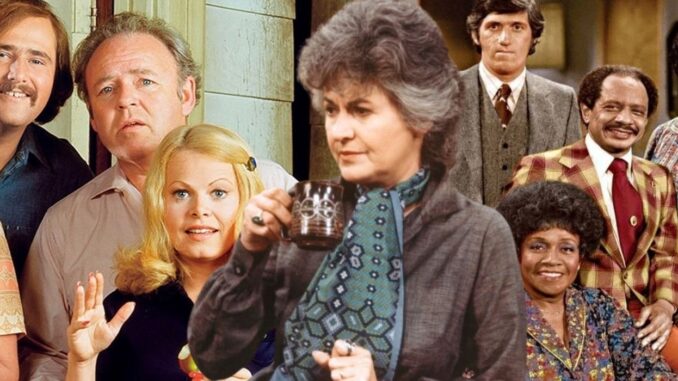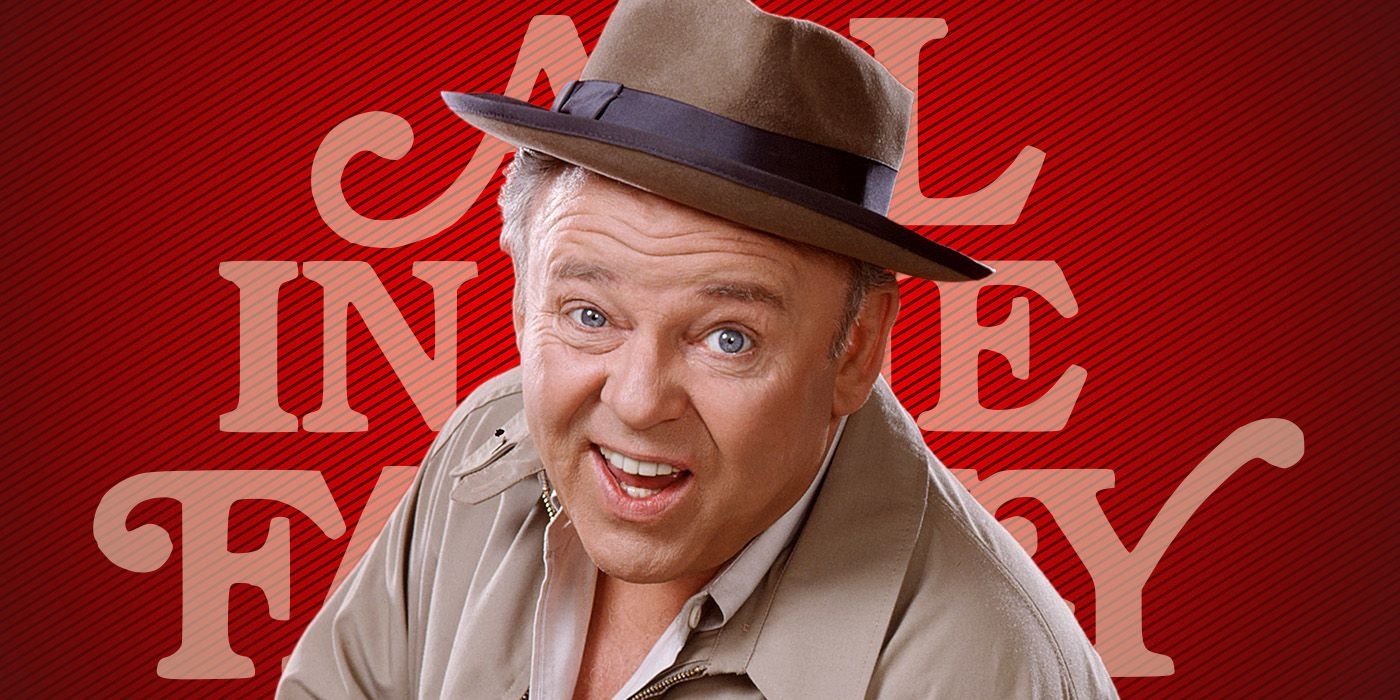
Few sitcoms have shaped television history quite like All in the Family. Airing from 1971 to 1979, Norman Lear’s iconic series wasn’t afraid to challenge America’s conscience — tackling race, class, politics, gender, and religion through humor that was both bold and biting.
While every episode offers something worth watching, a few stand above the rest as essential viewing. These are the episodes that defined Archie Bunker, challenged audiences, and cemented the show’s place as one of the greatest TV series of all time.
Whether you’re revisiting the Bunkers or discovering them for the first time, these three episodes are must-watch classics that still resonate today.
The Genius Behind ‘All in the Family’
Before diving into the episodes, let’s take a quick step back. What made All in the Family such a cultural milestone?
The show dared to be honest at a time when most sitcoms played it safe. Instead of perfect suburban families, viewers got Archie Bunker — a working-class man full of contradictions: bigoted yet lovable, stubborn yet vulnerable.
Through Archie, creator Norman Lear reflected the uncomfortable truths of American society. And that’s exactly why the show remains so timeless.
Episode 1: “Meet the Bunkers” (Season 1, Episode 1)
Where It All Began
The pilot episode, “Meet the Bunkers,” is a perfect place to start. Airing on January 12, 1971, it introduced audiences to Archie (Carroll O’Connor), Edith (Jean Stapleton), Gloria (Sally Struthers), and Mike “Meathead” Stivic (Rob Reiner).
From the opening piano chords of “Those Were the Days,” you knew this wasn’t going to be an ordinary sitcom.
Why It’s Essential
This episode set the tone for everything that followed. Archie’s old-fashioned views immediately clash with Mike’s liberal ideals, sparking debates that felt straight out of real American living rooms.
Norman Lear didn’t waste time hiding behind comedy — he used it as a weapon. Within 25 minutes, the show addressed racism, gender roles, and generational conflict, all while making audiences laugh.
The Takeaway
“Meet the Bunkers” isn’t just an introduction — it’s a mission statement. It boldly tells viewers, “We’re going to talk about real stuff — and we’re not pulling punches.”
If you’re new to All in the Family, this is where your binge begins.
Episode 2: “Sammy’s Visit” (Season 2, Episode 21)

The Day Archie Met Sammy Davis Jr.
Arguably one of the most iconic sitcom episodes in television history, “Sammy’s Visit” aired on February 19, 1972.
In this unforgettable half-hour, the one and only Sammy Davis Jr. — a Black, Jewish, and world-famous entertainer — accidentally leaves his briefcase in Archie’s cab and comes to the Bunker house to retrieve it.
Why It’s Legendary
The brilliance of this episode lies in its simplicity. When Sammy walks through that front door, two worlds collide — Archie’s narrow-minded worldview meets the charm and class of one of the biggest stars in America.
What unfolds is pure comedic gold — and surprisingly touching.
Archie, trying to play the gracious host while wrestling with his biases, ends up in one of TV’s most famous moments: when Sammy plants a kiss right on Archie’s cheek as the camera flashes.
The Message Behind the Laughter
This episode is more than just a funny story — it’s social commentary disguised as slapstick. It confronts racism not with preaching, but with irony and grace.
By the end, even Archie’s discomfort becomes part of the lesson. Sammy wins — not just the laugh, but the moment.
Why You Should Stream It Now
“Sammy’s Visit” is a cultural artifact that shows how humor can bridge divides and make audiences question their own prejudices — all without feeling lectured.
Even 50 years later, it’s impossible to watch without smiling, thinking, and maybe even tearing up a little.
Episode 3: “Edith’s 50th Birthday” (Season 8, Episode 4)
A Bold Step into Serious Storytelling
When All in the Family first aired, audiences expected comedy — but by its eighth season, the show was doing something no other sitcom had dared to try: dealing with trauma in real time.
“Edith’s 50th Birthday,” which aired on October 16, 1977, begins with plans for a surprise party — but quickly turns into one of the most shocking and emotional episodes in TV history.
The Story That Stunned America
In this episode, Edith is attacked by a would-be rapist who tricks her into letting him into the house. The show doesn’t use graphic violence, but the tension is unbearable.
What makes this episode unforgettable isn’t the attack itself — it’s Edith’s reaction. Jean Stapleton delivers one of the most powerful performances ever seen on television. She captures fear, confusion, and strength in equal measure.
Why It’s Essential
This episode changed everything. It showed that sitcoms could go beyond laughter — that they could also spark empathy and awareness.
Edith survives, but she’s not the same, and neither are the viewers. For the first time, All in the Family dropped the audience into a raw, uncomfortable reality — and it worked.
The Legacy
Even decades later, “Edith’s 50th Birthday” is discussed in classrooms, documentaries, and retrospectives as one of the boldest TV moments of the 1970s.
It proved that television could be more than entertainment — it could be art that makes you feel something deep and real.
Why These 3 Episodes Still Matter Today
Each of these episodes — from the show’s groundbreaking debut to its emotionally charged later years — represents a different layer of what made All in the Family a masterpiece.
They prove that great television doesn’t fade; it evolves. The issues Archie and his family faced — race, gender, fear, misunderstanding — are still part of today’s world.
Watching these episodes now is like holding up a mirror to our own time.
The Characters That Made It All Work
Archie Bunker: The Flawed Everyman
Carroll O’Connor turned Archie into more than a stereotype — he was a fully realized human being. Viewers loved him and hated him, often in the same scene.
He wasn’t perfect, but that was the point. Archie forced America to confront its own contradictions.
Edith Bunker: The Heart of the Show
Jean Stapleton gave us one of the most compassionate and layered characters in TV history. Her gentle nature and moral clarity often cut through Archie’s stubbornness like sunlight through clouds.
Gloria and Mike: The Voices of Change
Sally Struthers and Rob Reiner represented the youth of America — passionate, idealistic, and impatient for progress. Their debates with Archie captured the generational divide that defined the 1970s.
How Norman Lear Changed Television Forever
Norman Lear’s genius was his ability to make people laugh and think. He didn’t sanitize reality — he amplified it.
All in the Family didn’t just entertain; it educated, provoked, and united people around uncomfortable conversations.
It paved the way for shows like The Jeffersons, Maude, Good Times, and One Day at a Time — all of which continued Lear’s legacy of socially conscious storytelling.
How to Stream ‘All in the Family’ Today
Want to relive these iconic episodes? The full series is available on several major streaming platforms. Whether you’re watching on a smart TV or phone, each episode is beautifully restored and ready to revisit.
When you stream these three episodes, you’re not just watching TV — you’re witnessing history unfold, one laugh and one lesson at a time.
Why Younger Audiences Should Watch
Even Gen Z and Millennials can find value in All in the Family. Its humor is timeless, and its lessons about prejudice, empathy, and growth are just as relevant today as they were 50 years ago.
The dialogue may be dated in language, but not in message. The show invites every viewer to ask themselves: How much have we really changed?
The Enduring Impact of ‘All in the Family’
Half a century later, All in the Family remains the gold standard for socially aware television.
These three episodes — “Meet the Bunkers,” “Sammy’s Visit,” and “Edith’s 50th Birthday” — represent the perfect blend of laughter, truth, and courage. They remind us that the best stories don’t just entertain us — they challenge us to be better.
Conclusion: The Show That Still Speaks Truth
All in the Family wasn’t just a sitcom — it was a revolution in 25-minute episodes. It broke boundaries, shattered expectations, and opened the door for honest conversations about America’s identity.
When you stream these three essential episodes, you’re not just revisiting the past. You’re stepping into the heartbeat of a show that dared to tell the truth — and in doing so, changed television forever.
